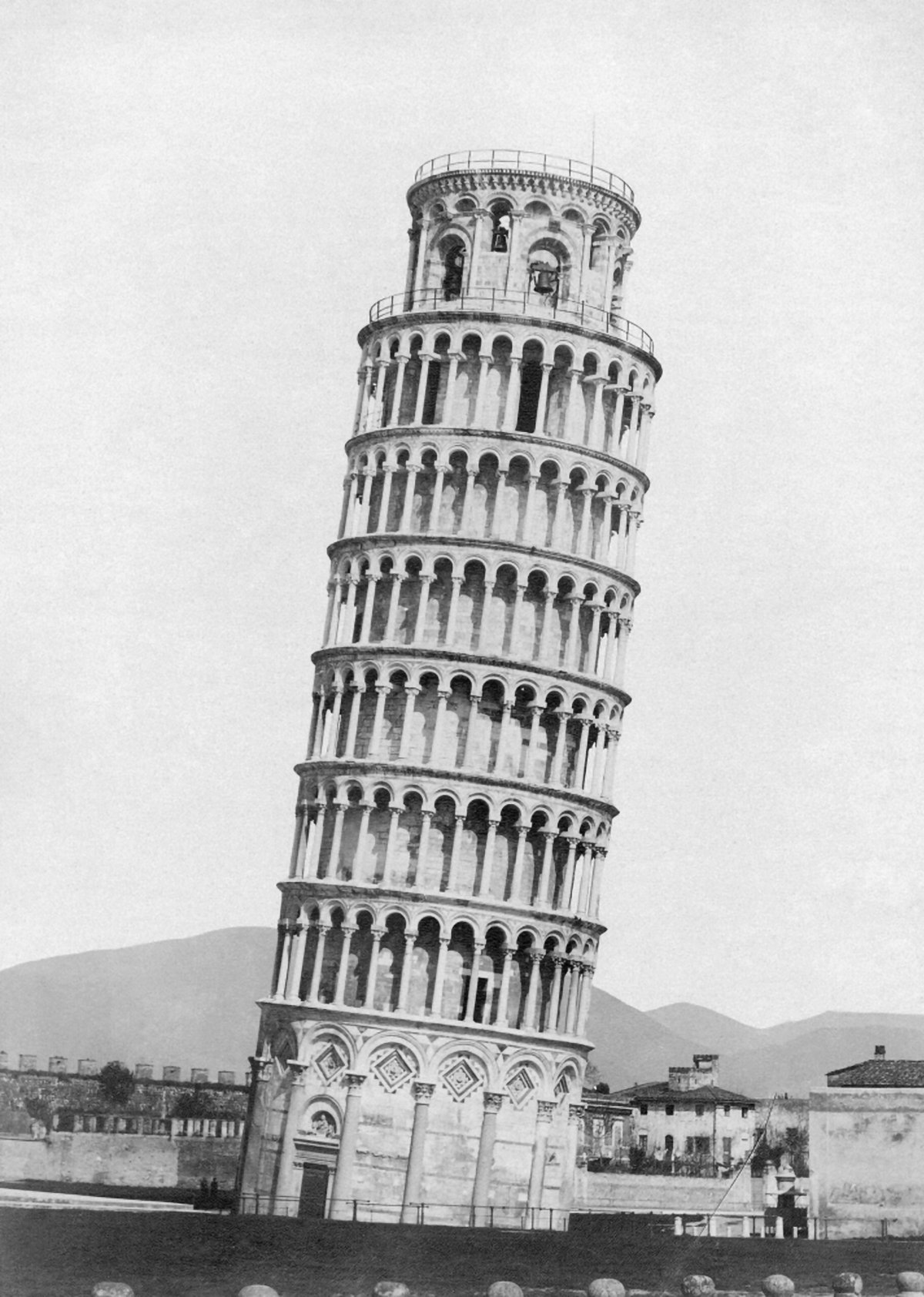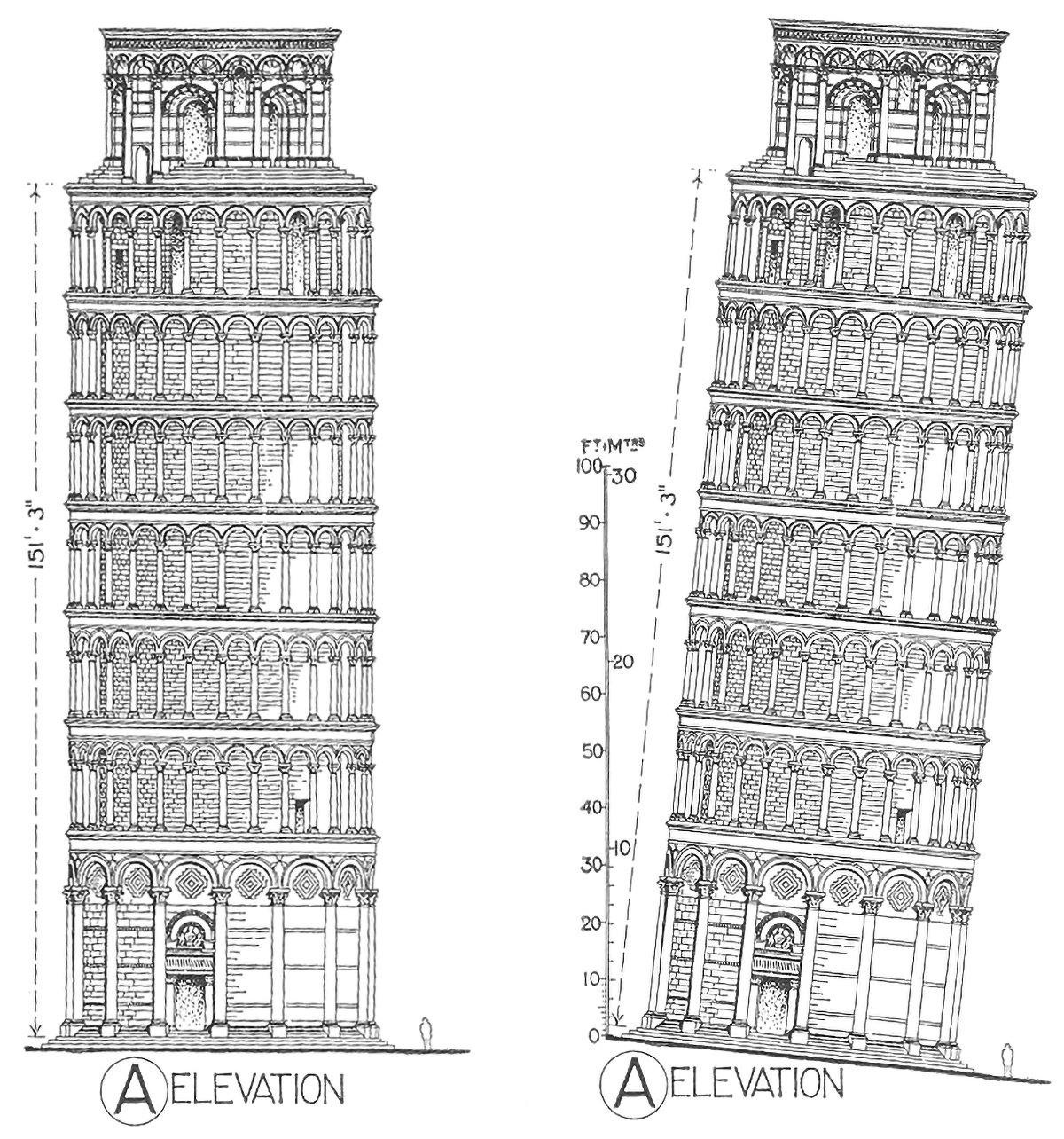The Leaning Tower of Pisa and the Axis Mundi
Photograph of the Leaning Tower of Pisa, circa 1900. The tower’s trademark lean is shown, which is the reason it’s become so famous.
Pictured here is the campanile at the Pisa Cathedral, better known as the Leaning Tower of Pisa. The tower is world-famous for its iconic four-degree lean, and has become a major tourist attraction for the town of Pisa. This lean has allowed the campanile to become a symbol of the city. If you think of Pisa, you think of the Leaning Tower. This status and appeal comes from the campanile’s lack of vertical equilibrium, which forces visitors to confront the axis-mundi. It’s a unique tension that’s rooted in verticality.
Humans are a bipedal species, meaning we walk upright on two legs. This upright posture aligns our bodies with the axis-mundi, which is an invisible line starting at our head and continuing to the center of the earth. Gravity pulls us down along this line and confines us to the surface of the earth. Because this line is perpendicular to the surface, we all stand in equilibrium to our surroundings, and as a result we’re constantly balancing ourselves so we don’t fall over. It’s a primal struggle, so deeply engrained in our brains that it becomes involuntary as we learn to walk. Our buildings also have this struggle. They don’t walk about, of course, but they constantly fight gravity and balance themselves so they don’t fall over. At Pisa, however, this equilibrium has been thrown off due to unstable foundations.
Illustration by Sir Banister Fletcher of the Leaning Tower of Pisa, showing the tower’s iconic tilt. Originally drawn for Fletcher’s book A History of Architecture on the Comparative Method, first published in 1896.
These unstable foundations and the resulting lean of the tower have led to a tension within the structure. It stands in defiance of the axis-mundi, forcing any visitor to confront their own relationship with gravity. This is illustrated by the pair of drawings above. They’re both the same drawing, but I removed the lean from one of them. The non-leaning version looks quite normal, and there’s nothing to suggest it would become so well-known on its own. Compare this to the leaning version, and the tension becomes clear. It feels like it could fall over at any moment, which gives it a special and unique allure. This is why the tower is so famous. We can all relate to it, because we’ve all lost our equilibrium and fallen down at some point in our lives.
To further illustrate this point, consider for a moment if the campanile never developed it’s trademark lean. It’s a beautiful structure, to be sure, but nothing about it stands out from other campaniles built during the Renaissance. Without the lean, the city of Pisa wouldn’t have such a famous icon of world architecture. It would be just another Italian campanile. Luckily for Pisa, the tower did develop the lean, and the subsequent impact on the city has been profound. It’s a testament to the power of verticality that a small Renaissance tower can become a world icon simply because it leans a bit to the side.
Leonardo da Vinci’s Vitruvian Man. Taken from da Vinci’s notebooks and drawn sometime around 1490, it shows a human figure based on proportions described by Vitruvius in his Ten Books on Architecture.
Buildings aren’t supposed to lean to the side, just like the human body isn’t meant to lean to the side. As such, nearly every building we see doesn’t allow us to engage with the axis-mundi like Pisa does. The same can be said of our bodies. Normally, our brain does all the work to keep us balanced, and it does this in the background, meaning we’re not aware of it. Only when our balance gets thrown off do we take notice. To test this, try standing on one leg for more than a few seconds. You’ll notice small movements throughout your entire body that spring into action to keep you balanced. This is your body confronting the axis-mundi and working to maintain its equilibrium so it doesn’t fall over. It does this continuously whenever we’re standing up, but we usually don’t even notice it. The Leaning Tower of Pisa externalizes this conflict for us and forces us to take notice. It proudly stands off-balance, which provides a unique experience for those who visit it.
Check out other posts about architecture and verticality here.



